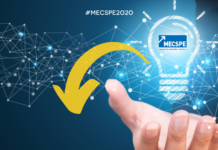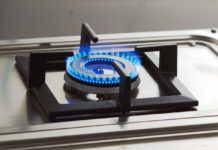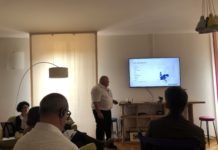Since, in 2011, at the opening of the conferences on the IoT, it was necessary to explain what was meant by Smart Home, a lot of water has passed under the bridges. This was explained by Alessandro Perego, Scientific Director of the Digital Innovation Observatories at the Politecnico di Milano, opening last Friday the presentation of the research results of the Smart Home Observatory. Today the words are clear to everyone, so much so that they have chosen for the presentation a very optimistic title: “There is almost (none) no one more: the Smart Home opens its doors”.
And that’s right? And that “almost”, what do you mean?
The numbers are undoubtedly positive: in Italy 2017 has represented, in relation to the world of connectivity, a market of 250 million, with a + 35% on the previous year. The sector has been driven by three sectors: the security sector, the boiler and thermostats sector and the large domestic appliance sector, which in turn is driven by the world of washing machines.
Behind the numbers, some shadows. In fact, if the figures and percentages are very respectable, other data invite you to look at how much is still to be done. Out of all the smart appliances sold, only in 15% of cases the user uses all the smart functions: it is a growing percentage, but also a data to think about. How much is the consumer aware of the potential of the equipment he has invested in?
That of the perception of value, an ancient and ever-current subject, is a theme underlined by Marco Signa, Whirlpool’s Connectivity Strategy Manager: «to understand the benefits of home appliances connected to the end user is difficult. However, when this happens, the consumer finds himself modifying his habits and lifestyle, catching all the advantages that new technologies can give him, especially in terms of free time. And also in terms of using the washing machine: the App that suggests the program suitable for loading encourages you to choose it even if it is not the usual program, used almost for laziness and inertia by default: the washing experience certainly improves and is more satisfying ».
The advantages deriving from the diffusion of connected appliances also come to the manufacturer, explains Signa: “100 years after its invention it is possible for the producers to really understand how the end user uses the washing machine. And, perhaps, use this information to improve it on the basis of user information ».
The speech by Piero Pracchi, Elica’s chief marketing officer, brings to the attention the change in cultural steps required by companies to adapt to new scenarios. A change not without difficulties, because it provides that product companies assume a mentality from a service company. Pracchi tells the experience of Snap, the new product that marked Elica’s entry into the Internet of Things. Snap is a hood that comes out of the cooking area, working together with the “cousin”, who works in the kitchen, to ensure clean air throughout the house. New product, new business system: Elica has created a separate business unit and is experimenting with direct sales to the consumer. For Snap Elica has also worked on a synergy with Vodafone, which led to the sale of 2-3,000 pieces.
In fact, household appliance companies play a leading role, but during the morning – full of content, ideas and reflections – in various interventions, attention is paid to another condition necessary to make the Smart Home more and more widespread: create a a system within which different types of product companies and service companies – telco, utilities, financial companies – play their role for a combined and global offer.
Marco Landoni, Edison Energia’s marketing director, summarizes it effectively: “in the future we will move from selling gas to selling heat, including the boiler in the offer”.
Waiting for these revolutions in the market what is the situation today of sales channels? For 70% the interlocutor is still the traditional supply chain, made up of architects, builders, distributors of electrical equipment and installers: it is still this channel that conveys products and services for around 175 million euros. The other sales channels are strengthened: eRetailers contribute 13% of the market, for a value of 32 million euro, the multichannel retailers grow by 65%, contributing to the market with a percentage of 9%. Retailers – both physical and online – have a value that goes beyond the economic: they are in fact a privileged showcase for knowing the products: for this type of sector the flyer is not enough to communicate the plus of the products.
The analysis of retail trends highlights another aspect on which to reflect: sales of connected appliances grow, but those of Smart Home shelves, such as video cameras and thermostats, are worrisome (-30%). Among the probable reasons for this decline some objective difficulties – not always the self-proclaiming products are actually easy to install for the end user, which therefore risks to have to turn to specialized technicians – and also to the choices of retailers who, after a 2016 below expectations, they had moved the Smart Home shelves to less visible points of the store. A further effort is therefore requested from the sales points: more work should be done on training salespeople, on product communication, on increasing consumer confidence towards Smart Home solutions.
From the presentation come also interesting ideas on the possible evolution of the Smart Home, which will come thanks to Artificial Intelligence and the possibility of customizing the offer of your home. Because, if smart home must be, must take into account that the needs are not all the same, and therefore give different answers depending on the consumer.
As in the last edition of the Smart Home Observatory, this year too there is great expectations for the arrival of Smart Home Speakers on the Italian market, which will see the entry of big players like Amazon (which entered this sector in the 2014 with Amazon Echo, equipped with the voice assistant Alexa), Google, Apple and Samsung.
In the United States, it is a sector with a significant market – € 14.1 million for Amazon Echo, 11 for Google Home – and it is therefore understandable that we expect from these products a significant boost towards Smart Home in Italy as well.
The “almost” of the day’s title could refer to their own, the great players able to contribute to a new step forward of Smart Home in Italy. All that remains is to wait for new developments and work – each in its own sphere – to communicate in an increasingly complete manner the benefits and potential of connected appliances.





